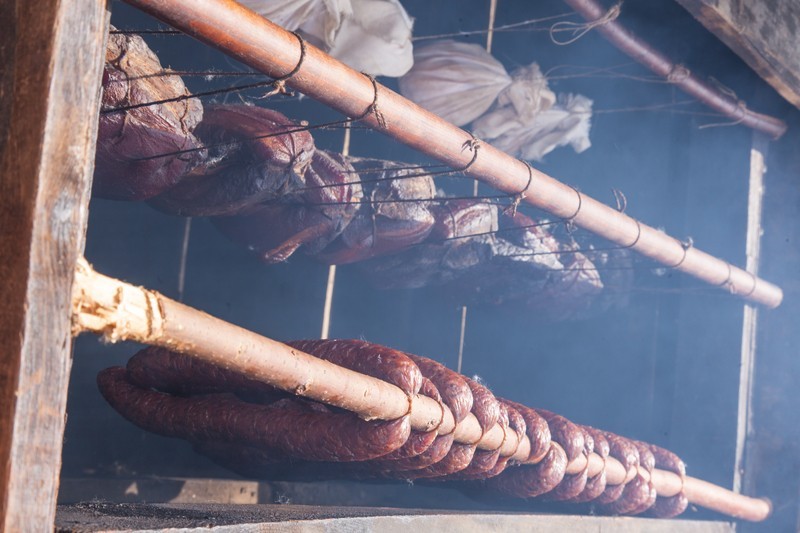Knowing how to sustain meat without freezing it, whether as a precaution or in the event of an emergency, is a critical skill you must learn if for no other reason than to ensure the money you have spent on your meat supply is not wasted in the even of a major power outage.
With the shape of our electrical grid, plus all the other possible man made and natural disasters, preserving some meat for an emergency as well as preparing to act in an emergency is vital to making sure you have a meat source if the SHTF moment is more than just a few hours.
Here are three methods.
Drying – Nearly everyone is familiar with jerky or dried meat. Drying meat removes moisture that fosters bacterial and fungal growth. Meat is cut into thin slices to allow it to dry before it starts to spoil. While meat can be dried without any additives, it is generally soaked in a brine mix with salt and spices prior to drying. The salt draws more moisture out of the meat and also discourages spoilage organisms. Dried meat is highly nutritious and very lightweight which makes it a great provision for traveling. It can also be mixed with vegetables and water to make nourishing soup. Meat to be dried should be very lean as fat will not dry but rather go rancid. Dried beef, especially if it has been spiced, will last 6 months or so, but it never hangs around that long at my house.
Salting – Salting is a very old way to preserve meat. Meat is cut into chunks and layered in a barrel with salt. Each piece is completely surrounded by salt. Salting pulls the moisture out of the meat and produces an environment that doesn’t allow for bacterial growth. Meat that has been properly salted becomes very hard and must be soaked in several batches of water to rinse the salt out of the meat before it can be prepared for a meal. Salted meat is generally used for stews and soups. Salted meat will last at least six months, although it may have to be repacked as the salt absorbs moisture from the meat and becomes brine. However; the longer the meat is in the salt, the more work it takes to make it edible.
Curing and Cold Smoking – Curing and cold smoking are the traditional ways to preserve fatty meats such as ham, bacon, and pastrami. Curing is the process of soaking the meat in a strong brine of salt and spices. The brine is often injected into larger pieces of meat to speed up the process. This not only flavors the meat, but draws out moisture and prevents the growth of spoilage organisms. Curing for preservation requires a stronger brine than those generally used with store purchased meat which are intended for flavor only not preservation. Once the brining process is complete, the meat is cold smoked to seal the surface as well as to add flavor. Cold smoked meat must not be heated beyond 110 degrees or the meat will start to cook and its keeping qualities will be compromised. Once the process of curing and cold smoking is complete, it can be wrapped in brown paper and stored in a cool dry place such as a cellar or basement. Do not try this with store purchased hams and bacon as they were not cured in a way intended for preservation and will quickly spoil. Cured and smoked meat can last up to 6 months, depending on the storage temperature.
Even if you do not want to take the precaution of preserving meat before a SHTF moment, it would pay to be prepared to do so with your meat in the event of a natural or man made disaster when power might be out for a while.
Drying, salting, curing and cold smoking are all options you can prepare for that do not require electricity.
For other options you can take to ensure you have a meat source in the event of a survival situation, please visit the Tin Hat Ranch.

@[1294380046:2048:Colleen Barclay Waymon]
@[100005699824971:2048:Becky Jenkins]
Great article, I loved teaching my SERE students how to cold smoke. If they did it successfully, they could use the meat on evasion!
Forgot pickling. Everyone from the Midwest or a cheap bar knows about pickled ham or pickled pigs feet.
Cook it well done and can it. You don’t need a canner to can food just has to be fully cooked
Traditional hungarian style still the way it’s done there today
I’ve tried this and it works well
David Goodman
Alicia Plummer
David Walker
Michelle Christian